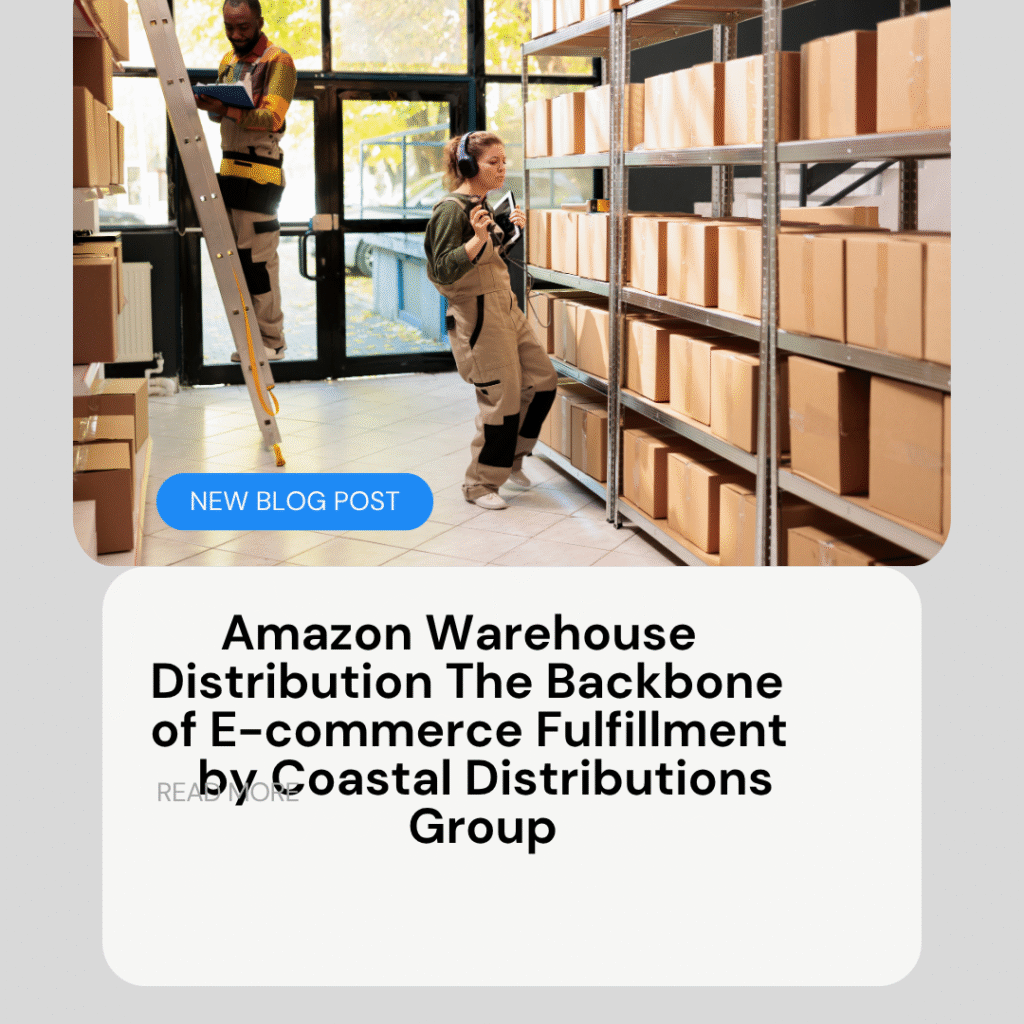Calculating Closing Inventory in 3PL Business
Calculating Closing Inventory in 3PL Business

Table of Contents
In today’s competitive supply chain environment, accuracy in inventory management is not just an operational requirement—it’s a business survival strategy. One of the most critical elements to be noted in inventory management is the calculation of closing inventory. For 3PL (Third-Party Logistics) providers like Coastal Distributions Group, closing inventory is more than just a number on a balance sheet—it’s the backbone of efficient fulfillment, customer satisfaction, and cost control.
This article is a comprehensive guide that explains:
- What closing inventory means in the context of 3PL.
- Different methods to calculate it.
- Why closing inventory is essential for financial accuracy and operational efficiency in 3PL.
- Challenges businesses face in tracking it.
- How Coastal Distributions Group helps clients calculate and manage closing inventory effectively.
By the end, you’ll have a complete understanding of how closing inventory ties into logistics and why partnering with a professional 3PL like Coastal Distributions Group makes the process seamless.
What is Closing Inventory in 3PL Business?
Closing inventory refers to the total value of stock remaining in a warehouse at the end of an accounting period. In a 3PL environment, this is the quantity of goods that Coastal Distributions Group continues to store and manage on behalf of clients after fulfilling customer orders.
Why It Matters in 3PL:
- Financial Reporting: Accurate financial statements require exact inventory numbers.
- Operational Efficiency: Knowing how much stock of the products remains ensures replenishment decisions are data-driven.
- Customer Satisfaction: Prevents stockouts of the products and delays, ensuring smooth order fulfillment.
- Cost Control: Helps optimize storage costs and prevent overstocking.
The Formula for Closing Inventory
The general formula for calculating closing inventory is:
Closing Inventory = Opening Inventory + Purchases – COGS (Cost of Goods Sold)
Where:
- Opening Inventory: Stock of the products available at the start of the period.
- Purchases: Additional stock acquired during the period.
- COGS: Cost of items or products sold during the period.
In a 3PL scenario, the process is more complex because multiple clients, SKUs, and distribution channels are involved. This is where advanced systems like WMS (Warehouse Management Systems) and real-time tracking by Coastal Distributions Group become critical.
Methods to Calculate Closing Inventory
There are several accounting methods in this regard businesses use, each with implications for valuation and tax reporting:
- a) FIFO (First In, First Out)
- Oldest stock is sold first.
- Closing inventory reflects the most recent purchase costs.
- Useful in fast-moving industries or perishable goods.
- b) LIFO (Last In, First Out)
- Newest stock is sold first.
- Closing inventory reflects older purchase costs.
- Often used where prices are rising.
- c) Weighted Average Cost
- Averages out the cost of all inventory.
- Closing inventory of the products is calculated by multiplying average cost per unit by ending quantity.
- Provides balance in volatile pricing environments.
- d) Specific Identification
- Each inventory item is individually tracked and valued.
- Common in luxury goods or unique product categories.
Why Closing Inventory of products is Critical in 3PL Business
Accurate Billing for Clients
3PL companies like Coastal Distributions Group must provide accurate inventory records so clients can bill their own customers with confidence.
- Warehouse Optimization
Incorrect inventory data leads to overstocking or stockouts, both of which increase operational costs.
- Financial Integrity
Closing inventory feeds directly into the calculation of gross profit and net income. Errors here lead to inaccurate financial reporting.
- Forecasting & Demand Planning
Knowing what’s left in stock at period-end enables data-driven purchasing decisions and demand forecasting.
- Challenges in Calculating Closing Inventory in 3PL
- Multiple Clients: A 3PL serves many businesses simultaneously, requiring segregated and precise tracking.
- High SKU Volume: Hundreds or thousands of product variations must be tracked.
- Returns Management: Returned goods complicate closing inventory calculations.
- Damages and Shrinkage: Accounting for lost or damaged items is essential.
- Manual Errors: Businesses relying on spreadsheets face high risk of mistakes.
Technology’s Role in Closing Inventory Calculation
Modern 3PLs like Coastal Distributions Group leverage technology to simplify inventory audits and calculations. Key tools include:
- Warehouse Management Systems (WMS): Automates stock movement, receipts, and orders.
- Barcode & RFID Tracking: Ensures each product is scanned and recorded in real time.
- Cloud Dashboards: Gives clients live visibility into stock levels.
- AI & Predictive Analytics: Helps forecast demand and recommend reorder points.
Case Example: Coastal Distributions Group in Action
Imagine a retail brand working with Coastal Distributions Group. At the end of Q2:
- Opening Inventory: 10,000 units valued at $200,000
- Purchases: 5,000 units costing $120,000
- Sales during quarter: 11,000 units
Using FIFO, Coastal Distributions Group calculates closing inventory as:
- 4,000 units remain.
- Valued at the cost of the most recent purchases.
- Ensures accurate reporting for the client’s financial records and replenishment planning.
This precision prevents errors, stockouts, and financial discrepancies.
Benefits of Partnering with Coastal Distributions Group for Closing Inventory
- Accuracy & Transparency – Detailed reports on stock levels.
- Reduced Costs – Prevents overstocking and minimizes holding costs.
- Time Savings – Automated systems eliminate manual reconciliations.
- Improved Client Trust – Clients know their inventory is in reliable hands.
- Compliance & Audit-Readiness – Coastal ensures records meet industry and financial compliance standards.
- Best Practices for Businesses to Manage Closing Inventory
- Regular cycle counting instead of only year-end audits.
- Automating inventory processes.
- Setting accurate reorder points.
- Partnering with a reliable 3PL like Coastal Distributions Group for inventory management.
Conclusion
Closing inventory is not just an accounting metric—it’s a strategic asset that drives operational efficiency, financial accuracy, and customer satisfaction in the 3PL industry. For businesses, outsourcing this responsibility to a trusted partner like Coastal Distributions Group ensures peace of mind and efficiency.
With advanced technology, transparent reporting, and expert teams, Coastal Distributions Group helps businesses accurately calculate closing inventory, optimize warehouse usage, and maintain cost-effective operations.
Whether you’re an eCommerce brand, retailer, or wholesaler, partnering with Coastal ensures your inventory management is as sharp as your growth strategy.
📦 Coastal Distributions Group – Fulfil Your Every Order with Precision.



